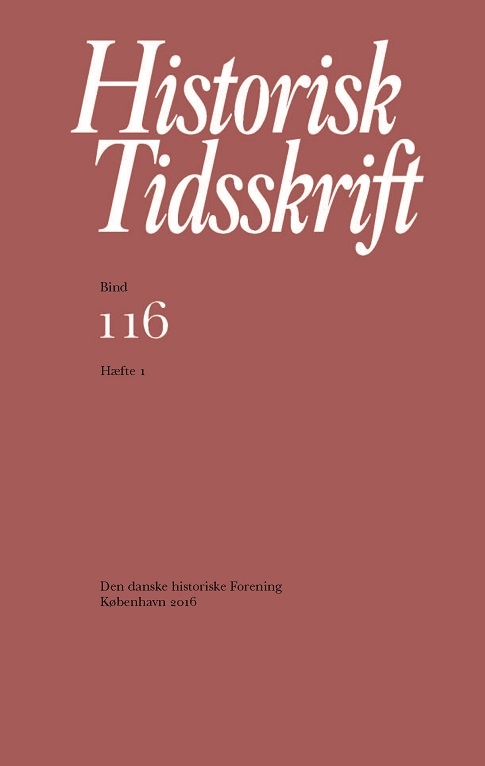Primo tempore-krøniken. En meget gammel danmarkshistorie
Resumé
The Primo tempore Chronicle. A very old History of Denmark
This study analyzes the three medieval manuscripts of the Annales Lundenses and the Chronicon Lethrense. These are Erfurt (Stadtbibliothek 23 8º), ending in 1267, and Arnamagnæan Collection (Copenhagen) AM 841 ending in 1309, and the fragmentary AM 843. The texts as published by E. Jørgensen (1920) and E. Kromann (1980) begin with a calculation of the years from the Creation to the birth of Christ, followed until 1125 by a version of the Anglo-Norman Annals. From 768 this is combined with excerpts from Adamus Bremensis and Danish material of unknown origin. From 1125 almost all notes concern Denmark and are similar to notes in other Danish annals.
The analysis shows that the edited texts deviate from the text of the manuscripts. Most important is the omission of the Chronicon Lethrense, which is a part of all three manuscripts. A comparison with the Anglo-Norman annals demonstrates that AM 843 best represents the archetype: a hitherto unrecognized chronicle of which the Chronicon Lethrense is the first part. This new chronicle is termed the Primo tempore Chronicle after the first two words of the text.
The two parts of the Primo tempore Chronicle both begin with a king of Denmark resisting the Emperor. King Dan, the first king, fights the first Emperor, Augustus, and founds Denmark. Later King Godfred threatens the first Frankish Emperor, Charlemagne. Politically speaking Denmark is emphatically not part of the Empire.
The fragmentary AM 843 follows a fixed format in the second part until 1111. At 1130 a badly corrupted section follows covering the years until 1135. Most of the text here and later is closely related to texts in other annals and can be identified as later additions. The conclusion is that the Primo tempore Chronicle ends with the death of king Nicolaus (Niels) or the accession of King Erik Emune in 1134.
This leads to several conclusions. When J. Olrik in 1872 extracted the Chronicon Lethrense, he argued that passages in the Chronicon Roskildense (after 1140/1157) critizising Erik Emune, were copied so that they referred to king Snjo in the Chronicon Lethrense. Reversing the dependency, these passages instead become an implicit criticism of the king ruling, when the Primo tempore Chronicle was written and a defense of the independent Danish archbishopric of Lund against the claims of Hamburg-Bremen. So the Chronicon Lethrense is not an independent work but part of the Primo tempore Chronicle and is redated to the 1130’s instead of the late twelfth century.
Downloads
Publiceret
Citation/Eksport
Nummer
Sektion
Licens
Ophavsret til bidrag i Historisk Tidsskrift tilhører forfatterne og Den danske historiske Forening som udgiver af Historisk Tidsskrift. For illustrationer gælder den ophavsret, som står anført i billedteksten. Ophavsretslovens almindelige bestemmelser gælder, hvilket vil sige, at ophavsretten gælder i 70 år efter forfatterens død. Bidrag i Historisk Tidsskrift må derfor, med forbehold for en ”moving wall” på tre år, frit downloades, læses, gemmes, anvendes og citeres (med kildeangivelse) i privat og videnskabelig sammenhæng, men de må ikke helt eller delvis genudgives af tredjepart, heller ikke i redigeret form, uden tilladelse fra forfatterne og Den danske historiske Forening. Henvendelse skal i så fald rettes til Historisk Tidsskrifts redaktion på histtid@hum.ku.dk.





